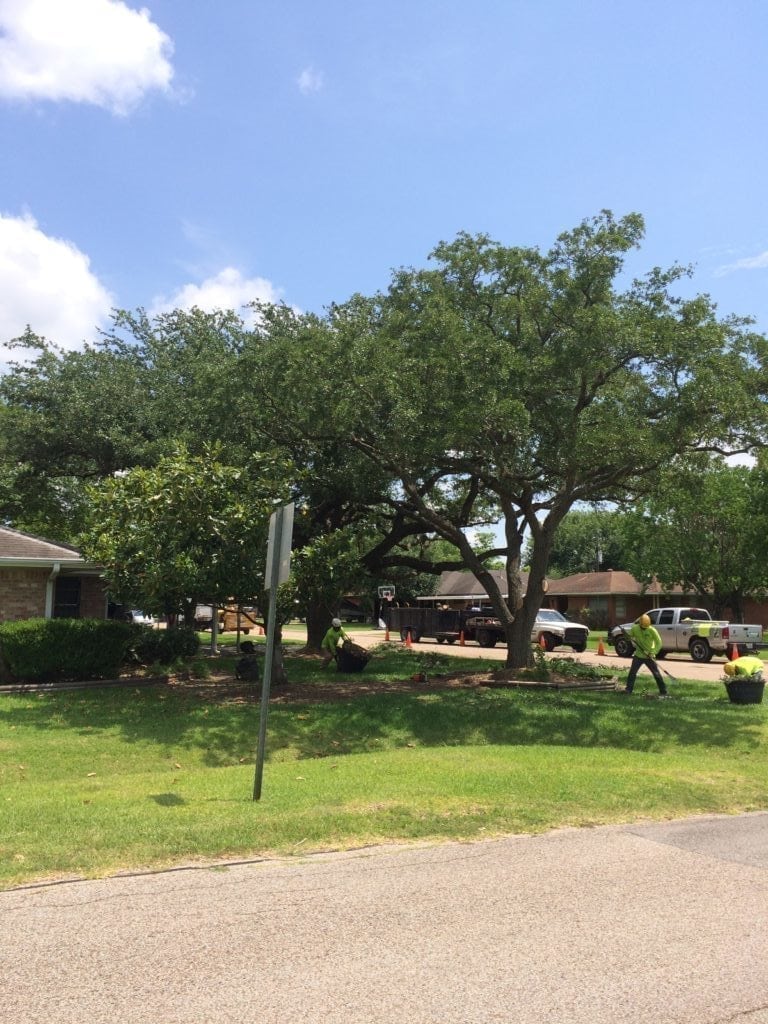Crown Thinning
Crown thinning includes cleaning along with selective removal of limbs to improve structure as well as increase air movement and light penetration through the tree. Thinning allows wind to pass, reducing the wind sail effects of foliage clumps and improving durability during a storm. Increased light stimulates and maintains interior foliage, as well as improving the turf beneath the tree. An effect known as lion tailing is caused by improperly removing an excessive number of inner foliage. This displaces weight to the ends of branches, weakening the branch and could lead to breakage. Another common sign of over thinning is a large production of watersprouts on interior limbs. Although the effects of crown thinning are temporary, when done correctly thinning provides valued benefits.


The crown thinning shown on the before and after pictures above allowed for increased light penetration. The magnolia below the crown of the oak will benefit from the added light. The opened up view shows off the attractive branch structure of the oaks. Thinning includes cleaning, so you are able to see some dead wood removal. Proper thinning should retain a natural shape and beauty of a tree.
